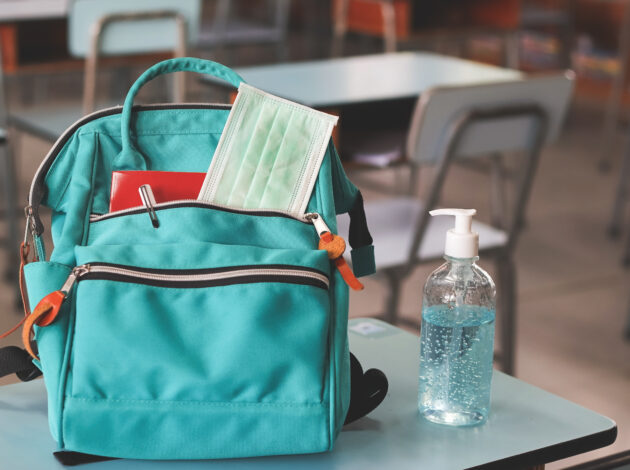The COVID-19 Schools Infection Survey (SIS) was launched at the start of the 2020-21 academic year, aiming to gain an insight into how the pandemic has affected children’s lives and their education. The first findings from this important study, jointly led by The Office for National Statistics (ONS), London School of Hygiene & Tropical Medicine (LSHTM), and UK Health Security Agency, have now been published. Fiona Dawe explains the vital role this data plays.
What is the COVID-19 Schools Infection Survey?
The study collects two main types of data – questionnaires issued to pupils, their parents and headteachers of participating schools, and antibody data collected via oral fluid swabs.
Antibody data allows us to estimate whether a child currently has antibody protection against COVID-19. The SIS data on antibodies among children is estimated from a sample of children aged 4 to 18 years old, attending state funded schools across England. The study has recently found that between 10 November and 10 December, 82% of secondary school pupils and 40% of primary school pupils had COVID-19 antibodies.
How does the SIS compare to the CIS?
Another estimate of antibody prevalence in young people can be found from the COVID-19 Infection Survey (CIS), which has recently begun estimating antibody levels among children aged 8 to 15. The CIS has a separate method of collecting this data, consisting of testing all individuals from a random sample of private households. Since it was launched in April 2020, over 476,000 individuals from over 236,000 households across the UK have participated in the study. This household survey, separate from the SIS, uses a fingerprick blood test to determine antibody levels, a different type of test from the SIS. Oral fluid tests were chosen for SIS due to ease of use in schools and for younger children. Oral fluid tests are likely to return lower results due to the sensitivity of the testing, but adjustments are applied to account for this, and are still a very useful tool to understand coverage among the school age population, particularly younger primary school children who remain largely unvaccinated.
The latest CIS antibody data show that in the week beginning 10 January 2022, the percentage of children aged 12 to 15 years who would have tested positive for COVID-19 antibodies ranged from 90.2% to 93.3% The percentage of children aged 8 to 11 years old that would have tested positive ranged from 63.3% to 72.7% in the same week.
So why is it important to collect data from different sources? This allows us to compare estimates obtained in different studies to try and build a better, more reliable picture of what is happening. Both studies have key differences in methodologies, including a slightly different sample population, testing methods and data collection periods. However, the estimates are reassuringly in line. It’s encouraging that both studies record a similar level of antibodies across the child population they are testing. The CIS antibody levels are slightly higher because the data collection period is later and infection rates were high during this time. Most importantly, these studies show that these age groups have some protection from the virus.
The SIS can also tell us more about the impact of the pandemic on children
The SIS also reveals more about life for children during the pandemic through in depth questionnaires filled out by pupils, parents and headteachers. Using this data, we found that since the pandemic began in March 2020, almost 1 in 100 (0.97%) children in primary schools and 2.74% of secondary school pupils fulfilled all the criteria for suffering from Long Covid, according to the definition outlined in the article. Of course, there is a degree of uncertainty in the true underlying prevalence of long COVID in the population. A key challenge for the ONS throughout the pandemic has been the difficulty in trying to measure an emerging phenomenon where there is no single agreed definition for research purposes. However, it is extremely important to explore how these ongoing symptoms are affecting the younger population and the way they live their lives.
Another topic explored by the SIS is mental health. Although our sample population differs from other sources of children’s mental health data such as MHCYP, we are still able to learn more about children’s experiences of COVID-19 through a variety of topics related to this subject. We also collect data from headteachers which can be used to provide context and allow us to gain a deeper understanding of children’s experiences throughout the pandemic and tell the story from both sides.
We will continue to collect and analyse data on children in schools across England to inform policies on pandemic recovery in the education sector and its impact on children’s learning.
You can learn more about the Schools Infection Survey and what it involves by watching this video.
Fiona Dawe is the Deputy Director of Wider Surveillance Studies at the ONS
